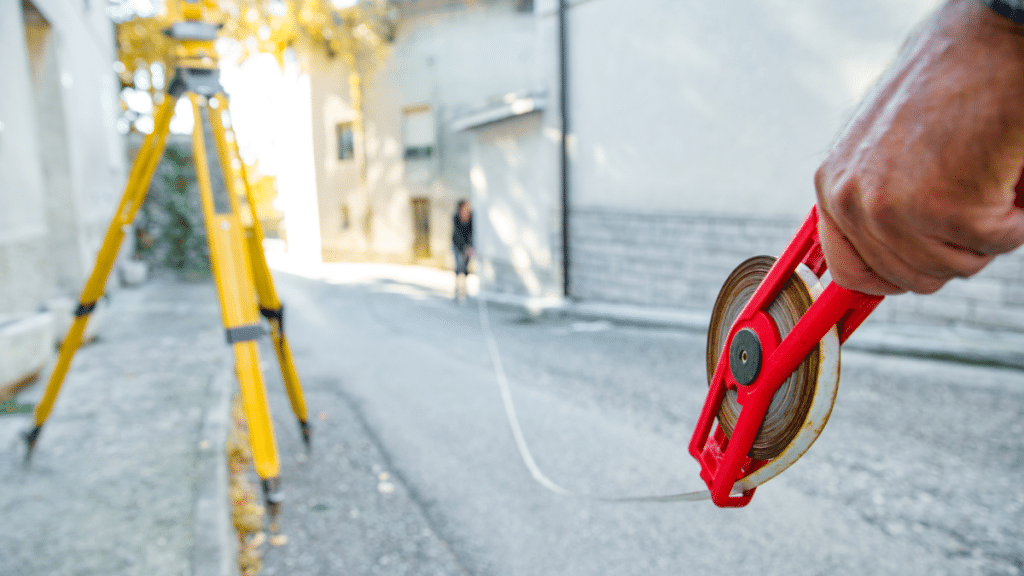Worksite safety is a top priority in industries like construction, surveying, forestry, and road maintenance. Ensuring that hazards, restricted areas, and essential markers are visible can prevent accidents and improve efficiency. One of the simplest yet most effective tools for this purpose is high-visibility flagging tape.
Often used to mark important areas, surveyor tape plays a crucial role in guiding workers, preventing mishaps, and maintaining a well-organized job site. In this article, we’ll explore what flagging tape is, how it enhances safety, and best practices for its use in various industries.
What Is Flagging Tape?
Definition and Purpose
Flagging tape is a brightly colored, non-adhesive plastic ribbon used for marking and identifying objects, locations, or hazards on job sites. Unlike regular adhesive tape, flagging tape is designed to be highly visible and easy to apply to various surfaces, such as trees, poles, stakes, and equipment.
Common Uses of Flagging Tape
Flagging tape serves multiple purposes, including:
- Marking hazardous areas to prevent accidents
- Indicating underground utilities or buried cables
- Directing workers and surveyors in large job sites
- Identifying property boundaries and construction zones
- Labeling trees or plants in forestry work
With its bright colors and versatility, flagging tape is an essential safety tool for many professionals.
Why High-Visibility Flagging Tape Is Important for Job Site Safety
1. Prevents Workplace Accidents
Many job sites involve heavy machinery, moving vehicles, and hazardous conditions. High-visibility flagging tape can be used to create clear visual warnings, reducing the risk of workers unknowingly entering dangerous areas.
For example, in construction zones, flagging tape can be placed around open trenches or unstable structures to keep employees and visitors safe.
2. Enhances Communication Among Workers
Large job sites often have multiple teams working in different areas. Flagging tape helps communicate vital information without requiring constant verbal instructions. Workers can instantly recognize color-coded markers that indicate safety zones, material storage areas, or ongoing projects.
3. Helps with Emergency Preparedness
In case of an emergency, such as a gas leak or hazardous spill, flagging tape can be used to section off affected areas and guide workers to safe exits. This quick response minimizes confusion and ensures the safety of all personnel.
Types of Flagging Tape and Their Uses
1. Standard High-Visibility Flagging Tape
This type of flagging tape is commonly used in construction, surveying, and forestry. It comes in bright colors like neon orange, yellow, red, and pink for maximum visibility.
2. Reflective Flagging Tape
For job sites that operate at night or in low-light conditions, reflective flagging tape is an excellent option. It enhances visibility when illuminated by vehicle headlights or flashlights.
3. Biodegradable Flagging Tape
Eco-conscious companies may opt for biodegradable flagging tape, which decomposes naturally over time. This is particularly useful in forestry and environmental projects.
4. Hazard-Specific Flagging Tape
Certain flagging tapes come with printed warnings such as “DANGER,” “CAUTION,” or “UTILITY LINE BELOW.” These specialized tapes help workers quickly identify specific risks.
How Surveyor Tape Plays a Role in Job Site Efficiency
What Is Surveyor Tape?
Surveyor tape is a specific type of flagging tape used primarily in land surveying. It helps surveyors mark boundaries, property lines, and measurement points with ease.
Benefits of Surveyor Tape in Construction and Surveying
- Improves Accuracy: Clearly marks important measurement points, ensuring precision.
- Saves Time: Surveyors and construction workers can quickly locate necessary markings.
- Reduces Errors: Prevents confusion by clearly differentiating between different sections of a job site.
Surveyor tape is widely used in real estate development, road construction, and infrastructure projects where precision is critical.

Best Practices for Using Flagging Tape on Job Sites
1. Choose the Right Color for the Job
Different colors of flagging tape can be used to indicate specific hazards or instructions. A common color code includes:
- Red: Electrical hazards or fire safety zones
- Yellow: General caution or physical hazards
- Blue: Water-related markings (e.g., pipelines)
- Orange: Temporary survey markers or excavation warnings
- Pink: General surveying and boundary markings
Having a standardized color-coding system ensures that all workers understand the significance of the markings.
2. Secure the Tape Properly
To ensure visibility and longevity, flagging tape should be securely tied around poles, stakes, fences, or other fixed structures. Loose or improperly tied tape may blow away or become ineffective.
3. Regularly Inspect and Replace Tape
Over time, flagging tape may fade, tear, or become dislodged due to weather conditions. Regularly checking and replacing tape ensures that markings remain clear and effective.
4. Train Employees on Flagging Tape Usage
All workers should understand how to use and interpret flagging tape markings. Providing training on proper placement, color codes, and maintenance can significantly enhance workplace safety.
5. Combine Flagging Tape with Other Safety Measures
While flagging tape is an excellent visual marker, it should be used alongside other safety tools such as cones, barriers, and warning signs. This multi-layered approach provides maximum protection for workers.
Industries That Benefit from Flagging Tape
1. Construction Sites
Used to mark excavation zones, hazard areas, and pathways for machinery.
2. Forestry and Landscaping
Helps in tree marking, trail designation, and environmental surveys.
3. Utility and Pipeline Work
Identifies underground utilities and prevents accidental digging-related incidents.
4. Road and Traffic Safety
Used for temporary road markings, detours, and accident zones.
5. Mining and Oil Fields
Assists in marking restricted areas and guiding workers in hazardous conditions.
Conclusion: Flagging Tape is a Simple but Powerful Safety Tool
High-visibility flagging tape is an essential safety measure that helps prevent accidents, improves communication, and enhances job site efficiency. Whether used as surveyor tape for marking land boundaries or as hazard markers in construction, this simple tool plays a critical role in workplace safety.
